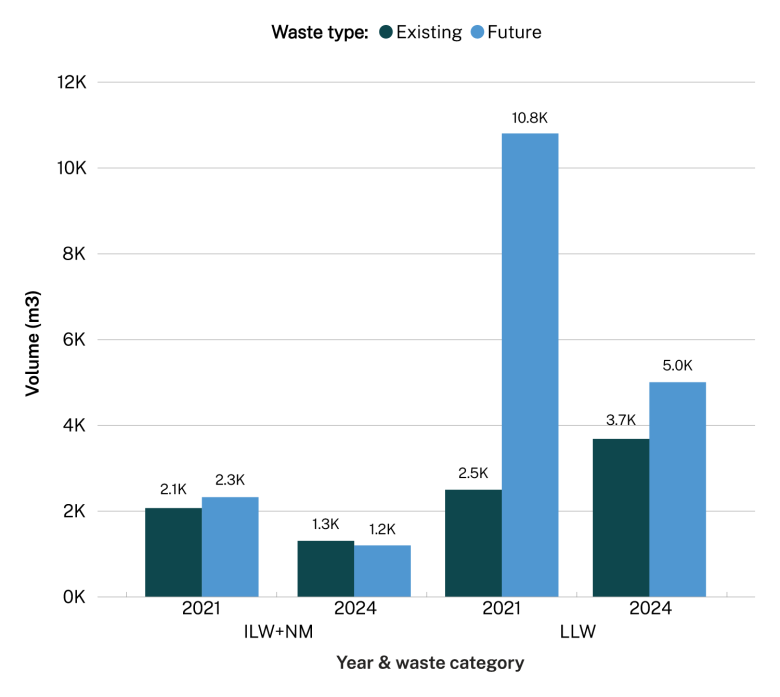The data we collected in 2024 shows that there are significant changes in reported waste volumes since 2021. The amount of existing low-level waste (LLW) has increased. In contrast, the projected volumes of future LLW, existing intermediate-level waste (ILW) and future ILW have decreased.
These changes mainly reflect:
- waste holders’ better understanding of the characteristics of existing waste
- changing assumptions about how much waste ongoing and future waste activities will generate
- ongoing operations that generate LLW.
They show that:
- methods of waste characterisation (including estimating volume) need to keep improving so that the data we collect continues to become more accurate
- our assumptions about waste characteristics may change over time.
For example, ANSTO and CSIRO have undertaken significant work to better understand the properties of projected waste and waste that is in storage:
- CSIRO has carried out further characterisation of its radioactive wastes at Woomera.
- ANSTO has developed its data on the expected rate of waste production from its nuclear medicine facility because there is now more operational experience.
- ANSTO has improved waste projection data based on planning for existing facilities and future decommissioning. ANSTO’s 2021 data included projections further into the future with the assumption that current activities would continue indefinitely.
The number of sealed sources that waste holders have reported has increased significantly from the 2021 report. This is because this year’s report includes data on sealed sources that state and territory regulators manage.
The number of disused sealed sources is likely to change over time as:
- more in-use sources reach the end of their lifespan
- some disused sources may become repurposed, recycled or disposed.
For the first time, the report includes information about future waste volumes that the AUKUS nuclear-powered submarine program will produce. The Australian Submarine Agency (ASA) has provided estimated quantities of projected inventories of LLW and ILW for 50 years of waste generation. In the tables and figures we have attributed this data to ASA, not Defence.
Table 1, Table 2 and Figure 1 show high level comparisons between 2024 low-level radioactive waste (LLW) and intermediate-level radioactive waste (ILW) volumes and those from 2021.
The ILW tables include nuclear materials (uranium, plutonium and thorium).
These volumes include estimates of LLW and ILW for the foreseeable future based on existing facilities and plans.

